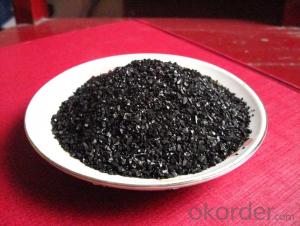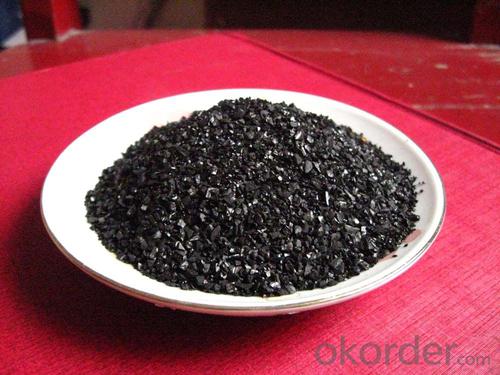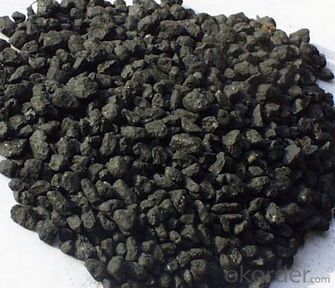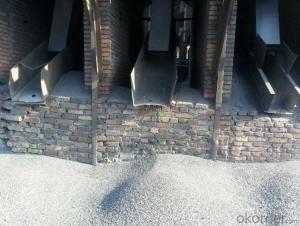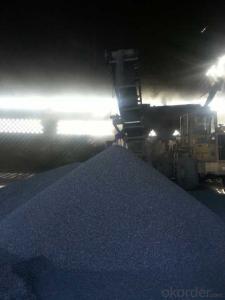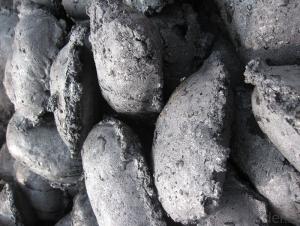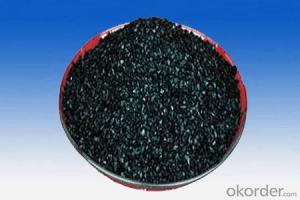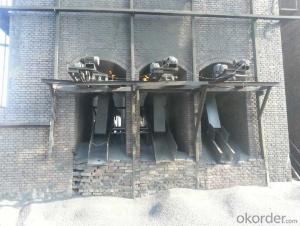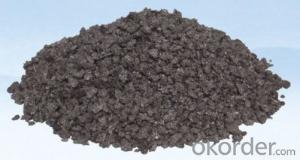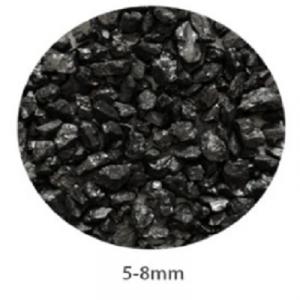FC92 Calcined Anthracite With National Standard
- Loading Port:
- Tianjin
- Payment Terms:
- TT OR LC
- Min Order Qty:
- 0 m.t.
- Supply Capability:
- 100000 m.t./month
OKorder Service Pledge
OKorder Financial Service
You Might Also Like
Packaging & Delivery
Packaging Detail: | 25kgs/50kgs/1ton per bag or as buyer's request |
Delivery Detail: | Within 20 days |
Specifications
Calcined Anthracite
Fixed carbon: 90%-95%
S: 0.5% max
Size: 0-3. 3-5.3-15 or as request
PARAMETER UNIT GUARANTEE VALUE | |||||
F.C.% | 95MIN | 94MIN | 93MIN | 92MIN | 90MIN |
ASH % | 4MAX | 5MAX | 6MAX | 7MAX | 8MAX |
V.M.% | 1 MAX | 1MAX | 1.5MAX | 1.5MAX | 1.5MAX |
SULFUR % | 0.5MAX | 0.5MAX | 0.5MAX | 0.5MAX | 0.5MAX |
MOISTURE % | 0.5MAX | 0.5MAX | 0.5MAX | 0.5MAX | 0.5MAX |
Feature
All of our goods are made in the best quality of world famous Tianjin. All of our products are with High carbon, Low ash, low sulphur, Low Moisture.
Usage
The Calcined Anthracite Coal/Gas Calcined Anthracite Coal/Carbon Raiser is mainly used in steelmaking in electrical stove, screening water, shipbuilding sandblast to remove rust. It can reduce the cost of steelmaking effectively by replacing the traditional petroleum coke of carburant.Also can improve the Carbon content in steel-melting and Ductile iron foundry.
Size can be adjusted based on buyer's request.
Pictures of Calcined Anthracite
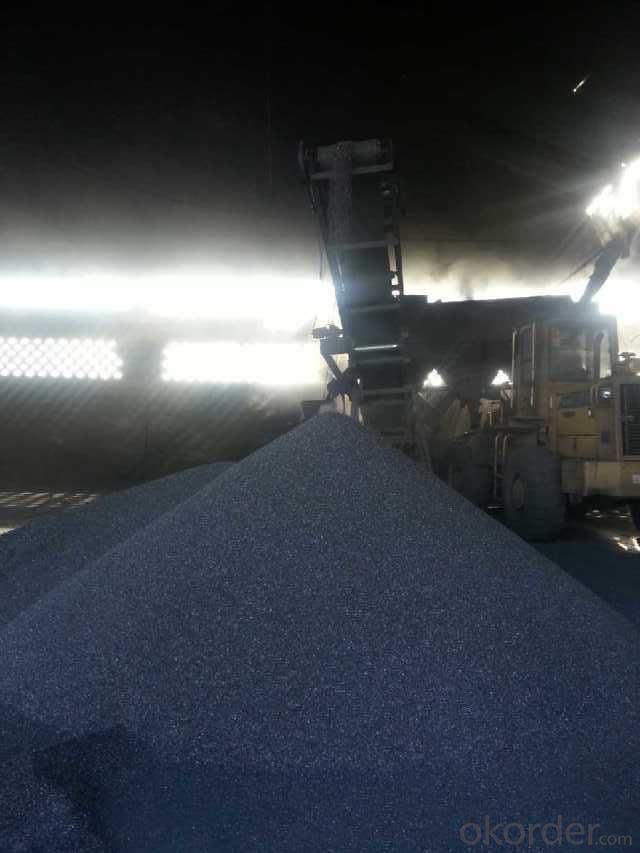
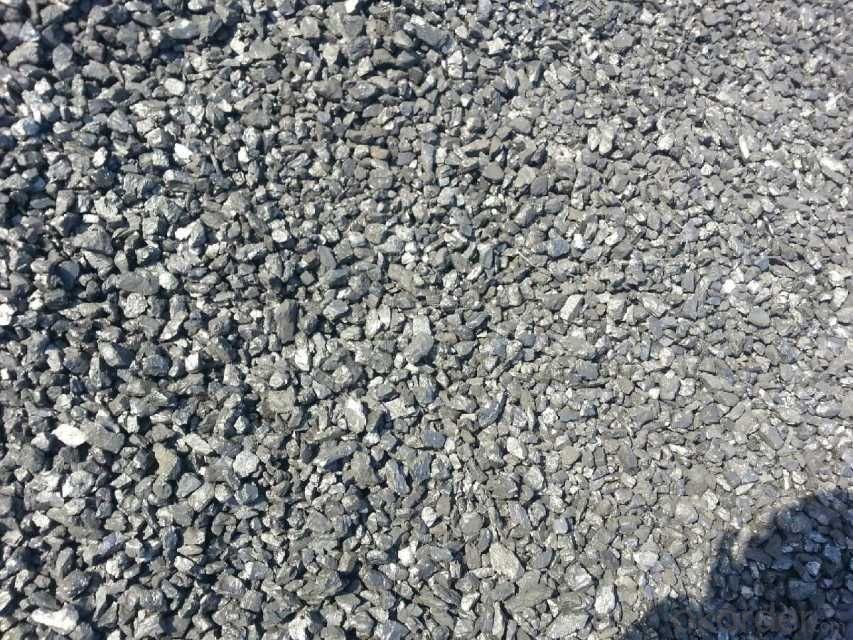
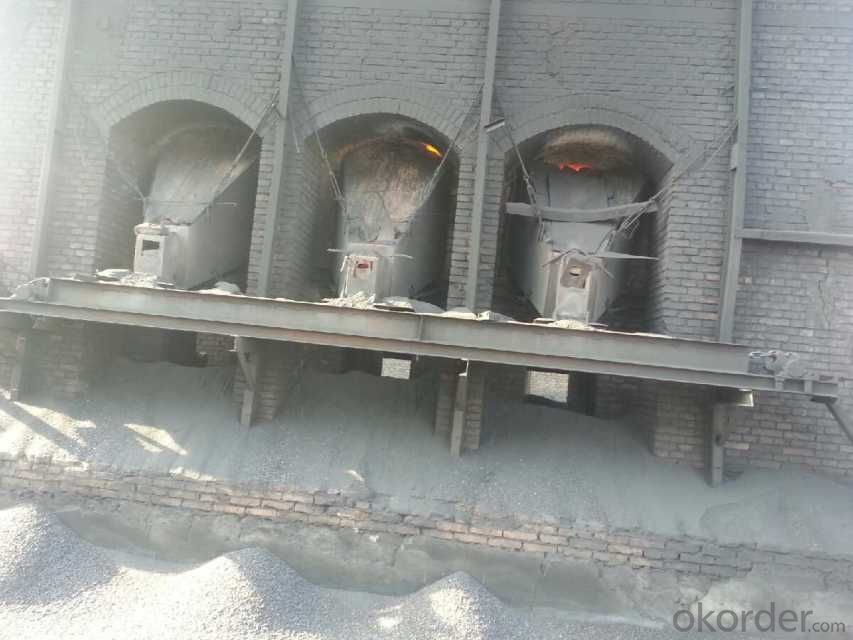
- Q: What are the effects of carbon emissions on the stability of volcanic regions?
- Carbon emissions can potentially have both positive and negative effects on the stability of volcanic regions. On one hand, increased carbon dioxide levels in the atmosphere can contribute to global warming, which in turn may lead to melting of glaciers and ice caps, resulting in a rise in sea level. This rise in sea level can increase the likelihood of volcanic flank collapse, as the added pressure weakens the stability of volcanic slopes. Additionally, global warming can also trigger more frequent and intense rainfall, potentially leading to increased erosion and landslides in volcanic areas. On the other hand, carbon dioxide emissions can also have a stabilizing effect on volcanic regions. The injection of carbon dioxide into volcanic systems can enhance the pressure within magma chambers, promoting magma crystallization and solidification. This process can reduce the likelihood of volcanic eruptions, as the solidified magma acts as a barrier that hinders the movement and release of magma. Overall, the effects of carbon emissions on the stability of volcanic regions are complex and dependent on various factors. It is crucial to continue studying these interactions to better understand the potential consequences and implications for volcanic hazards and the overall stability of volcanic regions.
- Q: What are the advantages of carbon-based nanoelectronics?
- Several advantages are offered by carbon-based nanoelectronics in comparison to traditional silicon-based electronics. To begin with, exceptional electrical properties are possessed by carbon-based materials such as nanotubes and graphene. They exhibit high electron mobility, enabling them to transport charges at a significantly faster speed than silicon. As a result, electronic devices can operate more efficiently and with increased speed. In addition, excellent thermal properties are exhibited by carbon-based nanoelectronics. They possess the ability to efficiently dissipate heat, thereby reducing the risk of electronic devices overheating. This advantage is particularly beneficial for high-power applications where effective heat management is of utmost importance. Furthermore, carbon-based nanoelectronics have the remarkable characteristic of being extremely thin and flexible. Nanotubes and graphene can be easily manipulated to create electronic components that are ultra-thin and flexible. This allows for the development of innovative devices such as wearable electronics and flexible displays, which were previously unattainable using silicon-based technology. Carbon-based materials also possess a higher mechanical strength in comparison to silicon. They exhibit greater resistance to bending and breaking, resulting in increased durability and longevity. Moreover, carbon-based nanoelectronics hold the potential for scalability. They can be fabricated using various methods such as chemical vapor deposition and solution-based processes, which offer the possibility of large-scale production at lower costs. Lastly, carbon-based nanoelectronics are environmentally friendly. Carbon is a widely available element and does not pose the same environmental concerns as silicon, which requires energy-intensive processes for extraction and purification. In conclusion, carbon-based nanoelectronics offer improved electrical and thermal properties, flexibility, scalability, durability, and environmental sustainability. These advantages make them highly promising for the development of next-generation electronic devices.
- Q: What are the uses of carbon nanotubes?
- Due to their unique properties, carbon nanotubes find wide application across various industries. In the realm of electronics and semiconductors, they are particularly valuable. With exceptional electrical conductivity, carbon nanotubes are ideal for creating smaller and more efficient electronic devices. They can be incorporated as conductive additives in polymers, resulting in materials with enhanced electrical and thermal properties. Another crucial domain where carbon nanotubes excel is materials science. Their exceptional mechanical strength and lightweight nature make them ideal for reinforcing and strengthening materials. By incorporating carbon nanotubes into composites, their mechanical properties can be improved, making them more durable. Furthermore, their usage in constructing super-strong fibers finds relevance in industries such as aerospace and construction. Carbon nanotubes have also found valuable applications in the medical field. They can be utilized in drug delivery systems, wherein drugs are encapsulated within the nanotube structure and directly delivered to specific cells or tissues. This method enables more effective and targeted drug delivery, minimizing the side effects associated with traditional drug administration methods. Additionally, carbon nanotubes are being explored as a potential material for biosensors, facilitating the early detection of diseases and pathogens. In the realm of energy storage, carbon nanotubes are being extensively researched as an alternative to conventional lithium-ion batteries. Their potential to store more energy and charge faster could revolutionize the field of energy storage and power generation. Additionally, carbon nanotubes can be employed as catalysts in fuel cells, enhancing their efficiency and cost-effectiveness. In summary, the applications of carbon nanotubes are vast and continue to expand as new discoveries are made. From electronics to materials science, medicine to energy storage, these nanotubes have the potential to revolutionize various industries and enhance the performance of existing technologies.
- Q: What are the impacts of carbon emissions on the stability of river ecosystems?
- Carbon emissions have significant impacts on the stability of river ecosystems. One of the primary consequences of carbon emissions is the increase in greenhouse gases in the atmosphere, leading to global warming. Rising temperatures have direct and indirect effects on river ecosystems. Firstly, increased temperatures can alter the physical characteristics of rivers and affect the availability of oxygen in the water. Warmer water holds less dissolved oxygen, which can harm aquatic organisms such as fish and invertebrates that rely on oxygen for survival. This decrease in oxygen levels can lead to reduced biodiversity and even fish kills. Secondly, climate change, driven by carbon emissions, can disrupt the natural hydrological cycle. Changes in precipitation patterns can result in droughts or floods, causing fluctuations in river flow. These changes can affect the spawning and migration patterns of many aquatic species, disrupting their life cycles and reducing their populations. Furthermore, altered river flows can also impact the stability of riverbank and riparian habitats, leading to erosion and habitat loss. Additionally, increased carbon emissions contribute to ocean acidification. When carbon dioxide is absorbed by water, it forms carbonic acid, which lowers the pH of the water. Acidic waters can have detrimental effects on aquatic life, including shellfish, corals, and other calcifying organisms. River ecosystems are interconnected with coastal and marine ecosystems, so the impacts of ocean acidification can indirectly affect river ecosystems through the food web. Moreover, carbon emissions contribute to the deposition of air pollutants, such as nitrogen and sulfur compounds, onto land and water bodies. These pollutants can be transported by rainfall into rivers, leading to increased nutrient levels and eutrophication. Excessive nutrients can cause harmful algal blooms, deplete oxygen levels, and create dead zones, further disrupting the balance of river ecosystems. In conclusion, carbon emissions have profound impacts on the stability of river ecosystems. Rising temperatures, altered hydrological cycles, ocean acidification, and increased nutrient levels all contribute to the degradation of these ecosystems. It is crucial to reduce carbon emissions and implement sustainable practices to mitigate these impacts and preserve the health and stability of river ecosystems.
- Q: How is carbon used in the production of batteries?
- Due to its unique properties, carbon is crucial in the manufacturing of batteries. It serves as an electrode material in primary and secondary batteries. When it comes to primary batteries, carbon acts as the cathode material. It plays a crucial role in facilitating the chemical reactions that occur during the discharge process, allowing the flow of electrons. The high conductivity of carbon is essential for efficient electron transfer, ensuring effective power delivery. Moreover, carbon's stability and low reactivity make it an excellent choice for durable primary batteries. In the case of secondary batteries, such as lithium-ion batteries, carbon is utilized in both the anode and cathode. The anode is composed of graphite, a type of carbon that can intercalate lithium ions during charging and release them during discharging. This process enables the reversible storage and release of energy, making graphite an ideal material for the anode. Carbon also enhances the overall performance of the cathode in secondary batteries. Carbon-based materials, like carbon black, are incorporated into the cathode to improve electrical conductivity and increase the available surface area for reactions. This results in higher energy and power densities, ultimately enhancing the battery's overall performance. Furthermore, researchers are exploring the use of carbon additives, such as carbon nanotubes or graphene, to further enhance battery performance. These carbon-based materials possess unique properties, including high surface area, electrical conductivity, and mechanical strength. These properties have the potential to improve energy storage capacity and battery lifespan. In conclusion, carbon plays a vital role in battery production by enabling efficient electron transfer, energy storage, and release. Its conductivity, stability, and ability to intercalate ions make it an essential component in both primary and secondary batteries, contributing to the advancement of energy storage technology.
- Q: How is carbon used in the production of pigments?
- Carbon is used in the production of pigments as a black colorant or as a base for creating various shades of gray. Carbon black, which is made by burning or decomposing organic materials, is commonly used as a pigment due to its intense black color. Additionally, carbon can be used to create different pigments by combining it with other elements or compounds, resulting in a wide range of colors for various applications in industries such as paints, inks, and plastics.
- Q: How do you remove the carbon stains on your clothes?
- Cleaning instructions for clothing * collar / cuff: Soak clothes in warm water with detergent powder for 15-20 minutes before washing. * Yellow White Sox: soaking washing powder for 30 minutes, then normal washing. * milk stains: use washing powder to do stain pretreatment and normal washing. If the milk stains are stubborn, you may need to use a bleach that is harmless to the clothes. * ordinary oil: a strong detergent is used for pre treatment and normal washing; if desired, bleaching of stubborn stains can also be done with bleach. The clothing removal method of rubber and plastic sex pigment stains with rubber and plastic pigment stains, it is difficult to remove, only use a suitable way to remove. 1, adhesive removal of stains clothes with glue stains, can use acetone or banana on glue water stains, use a brush to repeated washing, until soft glue stains off from the fabric, and then rinse with water. Once, can be repeated scrubbing several times, and finally wash. Do not use this method to avoid fabric damage. 2, white latex stain removal of white latex is a kind of synthetic resin, polyvinyl acetate emulsion. It is characterized by the addition of nylon silk and so on, the vast majority of fiber quality materials have bonding role, it can firmly adhere to the clothing. It has another characteristic that can dissolve in a variety of solutions. We will use its own characteristics to find ways to remove. By 60 DEG C or 8:2 alcohol liquor (95%) and a mixture of water, white glue stains on the clothes soak, soak about half an hour later, you can wash with water scrubbing, until...
- Q: How do human activities contribute to carbon emissions?
- Human activities contribute to carbon emissions in several ways. The burning of fossil fuels for electricity, transportation, and industry is one of the main sources of carbon dioxide emissions. When we burn coal, oil, or natural gas, carbon is released into the atmosphere. Additionally, deforestation and land-use changes also contribute to carbon emissions. Trees play a crucial role in absorbing carbon dioxide, so when forests are cleared for agriculture or urbanization, the stored carbon is released back into the atmosphere. Moreover, industrial processes such as cement production and chemical manufacturing also release carbon emissions. Finally, human activities like agriculture and livestock farming can produce methane, a potent greenhouse gas that contributes to global warming. Overall, our reliance on fossil fuels, deforestation, industrial processes, and certain agricultural practices all contribute to carbon emissions, exacerbating the problem of climate change.
- Q: What role does carbon play in the carbon cycle?
- Carbon plays a crucial role in the carbon cycle as it is the main element that cycles between the atmosphere, plants, animals, and the Earth's crust. It is released into the atmosphere through various processes like respiration, combustion, and volcanic activity, and then absorbed by plants through photosynthesis. Carbon is then transferred from plants to animals through the food chain. When plants and animals die, their organic matter decomposes and releases carbon back into the atmosphere or gets stored in the Earth's crust as fossil fuels. The carbon cycle helps maintain a balance of carbon dioxide in the atmosphere, which is vital for regulating Earth's temperature and supporting life on our planet.
- Q: The victory of the lightning 3361 material is full of carbon fiber, and the 3363 is made of carbon fiber and resin, which is better??
- All carbon fiber is good. The resin is only used for the badminton line, not for the racket.All carbon fiber material, is the most important material for badminton racket, all carbon fiber, good toughness, but also take into account the light performance.Carbon composite fiber, that is, in the carbon fiber added ordinary metal elements, such as aluminum, this material is relatively heavy, and toughness is not all carbon material.The best one is the carbon fiber material of racket frame which added to the rare metal, adding rare metal frame strong resilience, stability is better, and more suitable for double play.
Send your message to us
FC92 Calcined Anthracite With National Standard
- Loading Port:
- Tianjin
- Payment Terms:
- TT OR LC
- Min Order Qty:
- 0 m.t.
- Supply Capability:
- 100000 m.t./month
OKorder Service Pledge
OKorder Financial Service
Similar products
Hot products
Hot Searches
